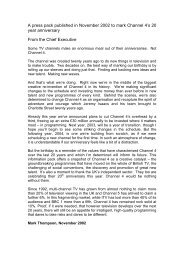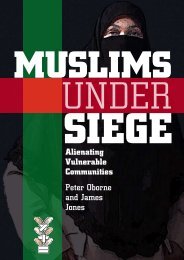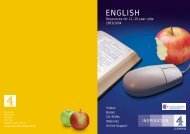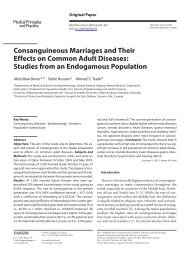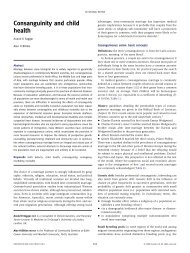Create successful ePaper yourself
Turn your PDF publications into a flip-book with our unique Google optimized e-Paper software.
28<br />
debate could be organised, with a motion of ‘Scots should<br />
be spoken in a Scottish Parliament’, with pupils chosen to<br />
speak for and against.<br />
Discussion<br />
In the programme, Billy Kay quotes Hugh<br />
MacDiarmid:<br />
‘Tae be yersel an tae mak that worth bein,<br />
Nae harder job tae mortals has been gien’<br />
What do pupils think this means?<br />
Billy also says that ‘it’s even harder tae be yersel if folk<br />
want tae deny ye the way ye speak’. Do pupils think this<br />
is true? Billy also says ‘Celebrate your culture and it’s a lot<br />
easier to accept other people’s tae’. Ask pupils to define<br />
their culture. What does it mean to them? A discussion of<br />
prejudice might also take place. Do pupils accept other<br />
people’s culture, habits, language?<br />
At the end of the programme, Billy Kay says that the<br />
pupils watching the programme are the decision makers<br />
of the future. Pupils might be prompted to discuss what<br />
sort of decisions they will need to take about language<br />
and culture. ‘May aw yer decisions be the richt yins’ is the<br />
last comment of the series. What does this mean to<br />
pupils? You might suggest some linguistic areas for pupils<br />
to discuss making decisions about. For example, the use<br />
of Scots in the media, including newspapers and<br />
television, films, books and comics, and the exam system.<br />
Extra-curricular activities<br />
Some schools might consider forming a group like the<br />
Aberdeen Scots Leid Quorum (ASLQ). It could be an<br />
after-school or dinner-time group. The Saltire Society<br />
encourages such groups for wide cultural themes<br />
(see page 32 for address).<br />
Writing<br />
Pupils could write a weaving or working poem or<br />
song. As demonstrated by the Dundee weaving song,<br />
there is always a strong rhythmic movement to these<br />
songs. You might introduce other waulkin/workin songs<br />
from Gaelic and Scots. The rhythms reflect the<br />
occupations of the singers, such as fishing, weaving,<br />
sowing, planting, knitting, sailing. Repeated choruses are<br />
usually also a feature of these songs, as is the way language<br />
reflects the work sounds – for example, sounds of<br />
machinery or water. Pupils of all levels of ability can<br />
tackle this, with a greater emphasis on repetition of<br />
sounds and words for those with limited vocabulary.<br />
Pupils could write their own modern Scots version of a<br />
well-known fairy tale. Activity Sheet 11 ‘Writing a Scots<br />
fairy tale’ provides ideas for writing a tale. Pupils can<br />
combine Scots and English in these stories and include as<br />
much Scots as they feel comfortable with. By now, they<br />
should have amassed sufficient vocabulary to ‘drop in’<br />
words even if they have not mastered Scots grammar. For<br />
pupils requiring differentiation because of either Scots or<br />
English linguistic limitations, the ‘drop in’ method works<br />
well. An occasional Scots word or local Scots place-name<br />
can be sufficient to give a Scottish flavour to the writing.<br />
Reading<br />
Activity Sheet 12 ‘The Bonnie Broukit Bairn’ provides<br />
the text of the poem by Hugh MacDiarmid as well as<br />
related questions. Pupils might analyse the poem’s<br />
meaning and gloss the Scots vocabulary. The poem raises<br />
environmental issues of conservation and effects on the<br />
world around, and this area might link to environmental<br />
studies, science and study of the planets.<br />
Knowledge about language<br />
Michael Marra talked about Scots words ‘singing well’.<br />
Identify onomatopoeic and rhythmic Scots words.<br />
The word list from the programmes can be scanned and<br />
selected from.<br />
Expressive arts<br />
Drama: if (as suggested in ‘Writing’ above) pupils<br />
create a work song, they might improvise movements<br />
along with it. The sounds can be recreated alongside these<br />
movements.<br />
Music: listen and learn some of the songs from the<br />
programme: ‘Hermless’ by Michael Marra, ‘Women of<br />
Dundee’ by Sheena Wellington, ‘Auld Lang Syne’ by Robert<br />
Burns. ‘Auld Lang Syne’ is supplied on Activity Sheet 13.



